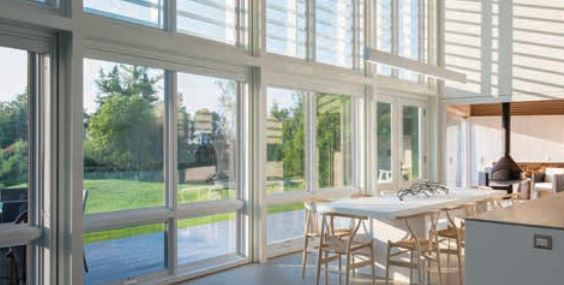Understanding Low-E Glass Window Replacement

Why Homeowners Put Off Windows Replacement
January 21, 2019
Benefits of Double-Pane Glass Replacement Windows
February 4, 2019Low-E glass is a popular Fremont, CA window replacement option. But what is a Low-E glass window replacement? How does it work and what does is do? How will it boost your home’s energy efficiency and lower your energy costs?
Low-E glass is a coating that is applied to glass. To understand how coatings work, it’s important to understand the energy that comes from the sun (solar spectrum). Ultraviolet (UV) light, infrared (IR) light, and visible light are all part of the solar spectrum. Each of these is identified by their wavelengths.
Infrared light, which is transmitted as heat into your home, has the longest wavelengths. Visible light, which is the available light in your home, has the next longest wavelengths. Ultraviolet light, which can cause floors, furniture, and rugs to fade over time, has the shortest wavelengths.
All of these come into your home through glass. When heat or light energy is absorbed by glass, one of two things happens. Either they are moved away by circulating air or they are re-radiated onto the glass’s surface. Emissivity is a material’s ability to radiate energy.
Generally, materials that are highly-reflective have low emissivity and non-reflective materials have high emissivity. All materials, including glass, radiate heat because of the long-wave infrared energy from the sun. How much heat is radiated depends on the emissivity and the temperature of the material’s surface.
When the emissivity of the window glass’s surface is reduced, the insulation properties of the window glass are increased. This is what Low-E glass window coatings do by minimizing the amount of infrared and ultraviolet light allowed in while simultaneously maximizing the amount of visible light.
Low-E window replacements have a infinitesimally thin transparent coating on them that reflects heat (long-wave infrared) in the summer and reflects cold (short-wave infrared) in the winter, making your home comfortable year round.
A good analogy is the example of a thermos. Inside is a reflective coating that maintains the temperature – hot or cold – of what it contains. So, if it’s wintertime, and your interior rooms are warm and you have Low-E window replacements, your rooms will stay warm. If it’s summertime and your interior rooms are cool and you have Low-E window replacements, your rooms will stay cool.
There are two kinds of Low-E coatings that can be applied to window replacements. One type is passive Low-E coatings, which creates the effect of passive heating to reduce the amount of artificial heat that is needed. This saves you money on energy costs during the winter. The other type is solar control Low-E coatings, which minimize the amount of solar heat allowed in your home. This keeps your home cool in the summer and significantly reduces energy consumption.
There are three values associated with Low-E coating window replacements. They are:
- U-Value: how much heat a window allows. The lower the value, the better insulated the window is.
- Solar Heat Gain Coefficient: how much solar heat is transmitted through the glass. Lower values translate to less summer heat.
- R-Value: how resistant the window is to heat conduction. The higher the value, the more efficient the window is.
For more information about Low-E glass for your Fremont, CA window replacement, you can talk with our experienced team at California Custom Creations. You can call us at (408) 316-6293 to make an appointment for a free in-home consultation.




